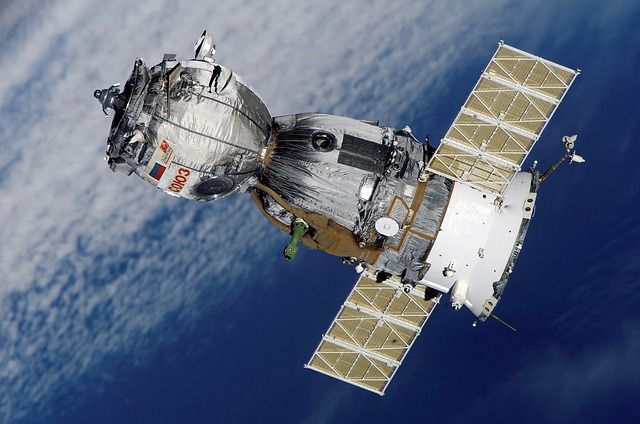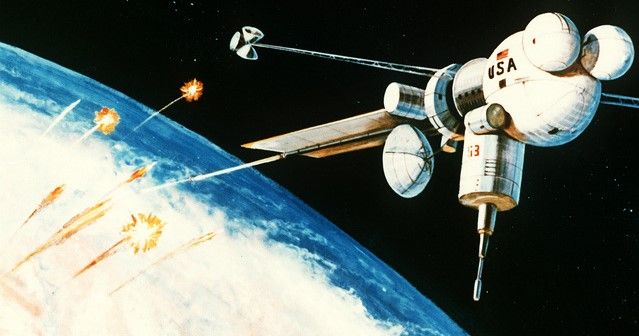The Importance of Satellite Protection
How quantum dots and nanotechnology are making space safer.

Satellites play a crucial role in the modern world - facilitating instantaneous communication, access to the Internet, precise weather forecasting, blockchain systems, and remote imaging. Alongside their civilian uses they also provide essential services to the military, such as more accurate target identification and communication.
However, the growing reliance on satellites has also led to an increase in the prevalence of threats towards them, and as such, safeguarding these assets has become crucial.

Possible attacks on satellites include long-range directed energy weapons such as lasers or high-powered microwaves, as well as anti-satellite missiles.
Ensuring these vital pieces of expensive hardware are protected from attack is key to winning any future war, as an opponent could be rendered both militarily and economically impotent without satellite access.

Passive countermeasures to protect satellites could include making it harder to target them or providing them with protection that can withstand attacks. Yet perhaps the most innovative solution is using quantum dots as a decoy.
Conventional technology used by military aircraft, such as the pyrolytic materials of Magnesium-Viton-Teflon (MVT) flares, provides intense radiation by means of an exothermic reaction to divert missiles from engaging with the target.

However, this technology is not an option due to the limitations of space, such as the lack of oxygen and the difficulty in discrimination between target and decoy from Long Wavelength Infrared Sensors (LWIR) devices.
This has led to the development of a revolutionary decoy system that makes use of quantum dots.
Quantum dots are nanoparticles that emit radiation with a profile similar to that of the asset they are protecting. In this way, anti-satellite weapons could mistake the decoy cloud of quantum dots instead of the target satellite.
Quantum dots are engineered to emit radiation in different sizes and shapes, and for this application, the quantum dots consist of nanoparticles of InSb, PbTe, HgTe, HgSe, CdTe, CdSe, and CdS.
Developed by the Raytheon Company, quantum dots provide a cloud of ‘distractors’ which creates confusion for the weapon's targeting system. Essentially, overwhelming an incoming missile’s ability to target.
Additional research by Raytheon has resulted in a further innovative approach using quantum dots to protect satellites against direct energy weapons (DEW) by modifying the surface of a satellite to deflect radiation.
Direct energy weapons use highly focused energy instead of a solid projectile to damage or disrupt a target. DEW’s include lasers, microwaves, particle beams, and sound beams.
As futuristic as this technology may sound, it has already been deployed in various situations. For example, as an anti-riot weapon, an invisible DE beam of radio frequency millimetre waves was tested on rioting individuals in America. Traveling at the speed of light, the beam penetrates the skin to a depth of less than half a millimetre. This produces an intolerable heating sensation, compelling the targeted individual to instinctively move.
Research on the weapon, which looks similar to a household satellite dish, is ongoing as there are fears that the weapon could inflict long-term damage to a target’s eyes.

Another application is Raytheon’s Vigilante Eagle – a ground-based anti-missile defence system aimed at protecting aircraft from shoulder-held missiles during take-off and landing. As the industry journal Defense Update, explains, “The system works by aiming a focused, precisely steered beam of electromagnetic energy at a missile that could threaten aircraft traffic near the airport, causing the missile to abort its intercept course.”

In relation to satellite defence, coatings that consist of densely packed nanoparticles such as silicon or tungsten oxides could provide a possible solution to attack from DEWs.
As the technology for directed energy weapons and anti-satellite missiles grow, so must satellite defence technology. The use of quantum dots as decoys provides a robust, innovative solution that is becoming more relevant in the space industry.
With new nanotechnology and advancements in quantum dot research, the possibilities for safeguarding our space assets are endless.
Photo credit: Loaves of Bread, SpaceX on Unsplash, Wikiimages from Pixabay, Rudy and Peter Skitterians, & SpaceX imagery, Picryl

